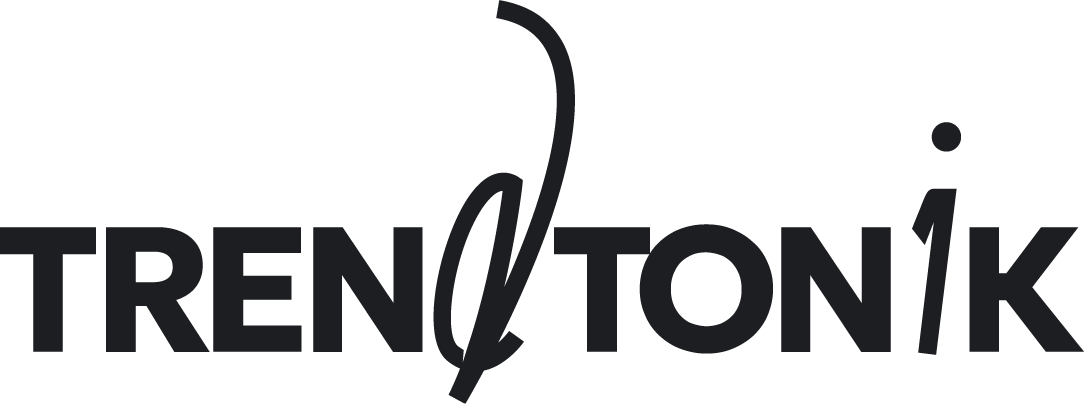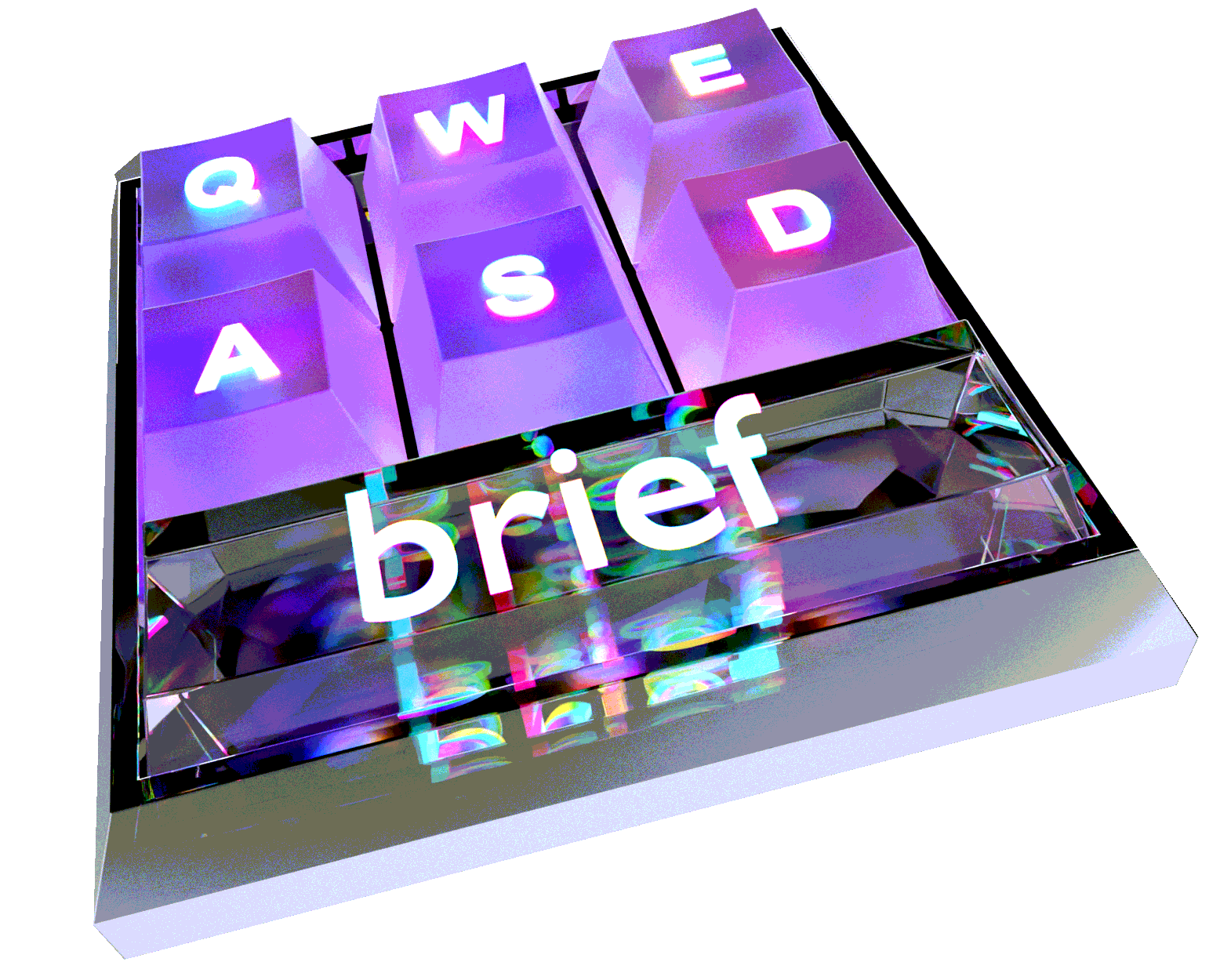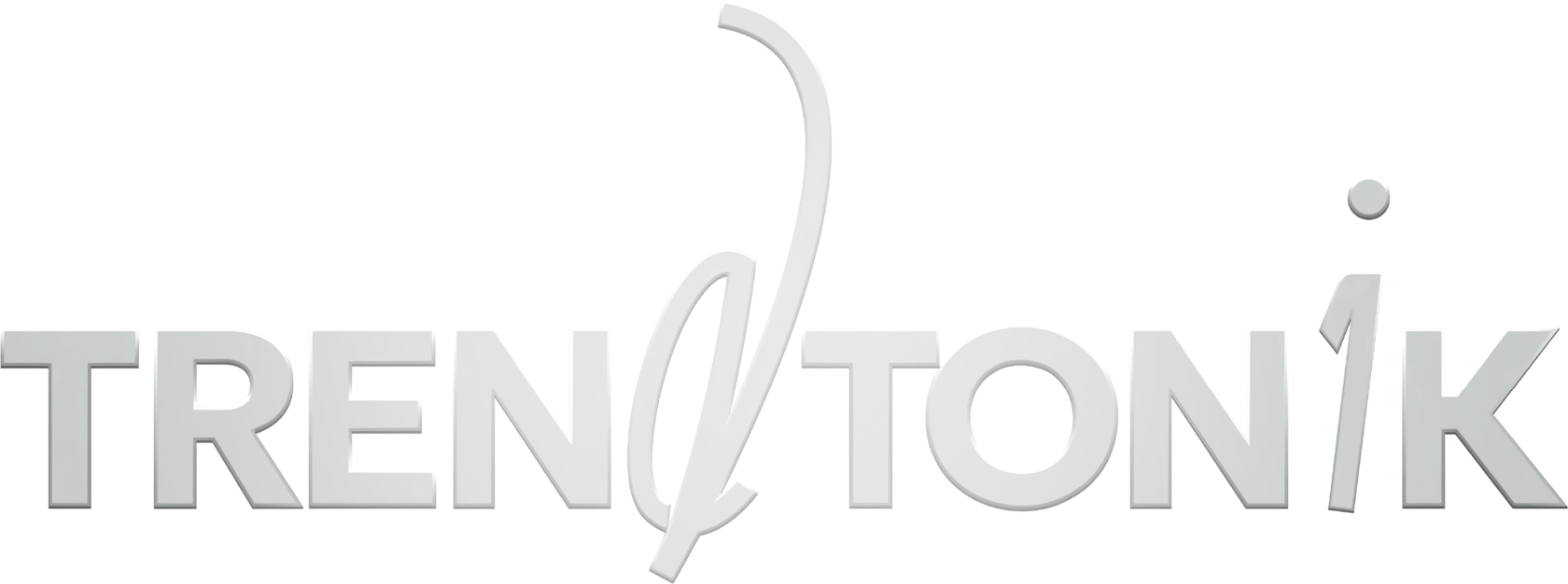


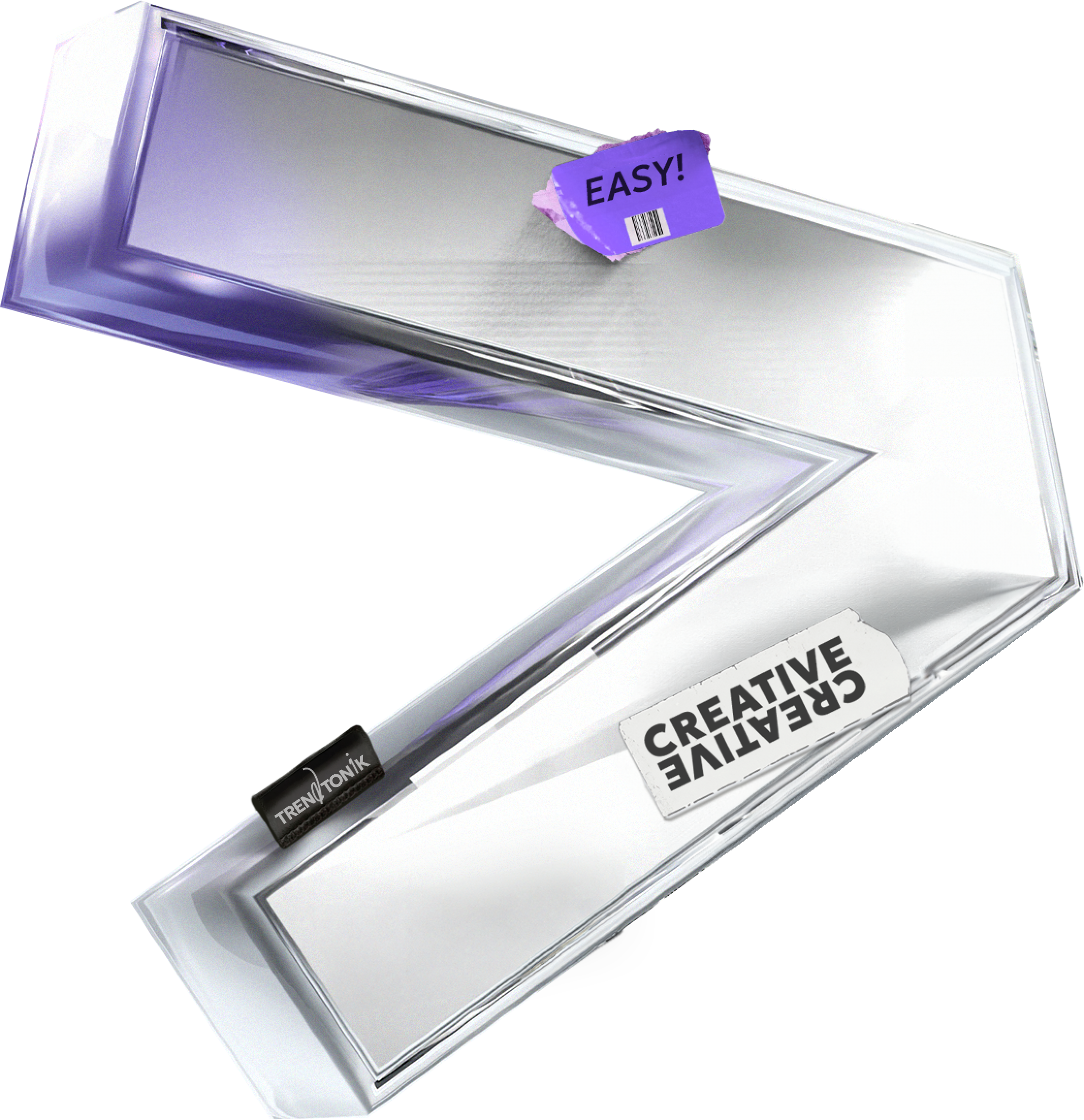
INDEPENDENT AGENCY WITH A FRESH TAKE ON BRANDING
We believe in the power of bright ideas and trust-based relations. By uniting professionalism, creativity, and openness, we've created a space where everything is feasible.




Contact Us
info@trendtonik.ru

OUR GOAL IS CREATING A BRAND THAT WILL WORK FOR YOU


Helping you stand out from competitors and increase your audience loyalty
Coming up with a bright name reflecting your brand personality
Developing a positioning strategy that will open up new opportunities for your business
Creating an unforgettable visual image that will attract and inspire clients
AREAS
OF OUR WORK
OF OUR WORK
No task can scare us—we'll take on projects of any scale with equal dedication and enthusiasm.
BUILDING A BRAND FROM SCRATCH
We'll help new companies and products make a bold and impressive statement, building a strong foundation for the brand's future growth.
Brand creation is a complex process including the development of a unique brand concept, its market positioning, and visual style.
When do you need this?
You have a product/service or a concept of one, and you're just entering the market.
What do you get?
Ready-to-launch brand and positioning strategy for the next 3–5 years.
1. Brand Audit
Includes an analysis of the market (barriers, specifics of a particular segment), competitors (strong and weak points, communication strategies), and the target audience (pain points, expectations, motivations, and needs). At this stage, the foundation for all future work is laid.
2. Positioning Strategy
Based on the data obtained during the audit, differentiation ways are identified, positioning hypotheses are created, and a brand platform is developed—its image that will help establish or strengthen a competitive position in the market.
3. Naming
Creating a unique name for the brand under which it will be registered and launched on the market. A complex process that includes studying the environment and competitors, compliance with legal procedures, as well as semantic and phonetic analyses.
4. Corporate Identity
Developing a unique visual language for the brand and the entire set of visual communications, including the logo, color palette, composition rules, and other graphic elements. Creating guidelines.
5. Brandbook
Developing the main corporate document that will help form and establish a cohesive brand image. It includes the market positioning principles, the brand's mission and legend, and corporate identity features.
When do you need this?
You have a product/service or a concept of one, and you're just entering the market.
What do you get?
Ready-to-launch brand and positioning strategy for the next 3–5 years.
1. Brand Audit
Includes an analysis of the market (barriers, specifics of a particular segment), competitors (strong and weak points, communication strategies), and the target audience (pain points, expectations, motivations, and needs). At this stage, the foundation for all future work is laid.
2. Positioning Strategy
Based on the data obtained during the audit, differentiation ways are identified, positioning hypotheses are created, and a brand platform is developed—its image that will help establish or strengthen a competitive position in the market.
3. Naming
Creating a unique name for the brand under which it will be registered and launched on the market. A complex process that includes studying the environment and competitors, compliance with legal procedures, as well as semantic and phonetic analyses.
4. Corporate Identity
Developing a unique visual language for the brand and the entire set of visual communications, including the logo, color palette, composition rules, and other graphic elements. Creating guidelines.
5. Brandbook
Developing the main corporate document that will help form and establish a cohesive brand image. It includes the market positioning principles, the brand's mission and legend, and corporate identity features.
REBRANDING
A brand must stay relevant, so timely updates are necessary in a dynamic market.
We'll analyze the current market situation and adjust the positioning and visual style so they better meet your goals and aspirations.
When do you need this? A new market situation has emerged (new players, social climate changes, etc.), which requires adaptation. Or you realize that your brand doesn't meet the target audience's needs or doesn't achieve its goals.
What do you get? An updated brand that meets your target audience's needs and current market conditions..
The processes of rebranding and creating a brand from scratch go through similar stages. However, in the case of rebranding, it takes time to determine a strategy immediately. Every project is unique, and its implementation, depending on the market situation and the brand's position, will require an individualized approach. Sometimes, it's enough to simply update the name and corporate identity, while other times, it's necessary to break everything down to the foundation.
Complete the brief, and we'll contact you to find a starting point and figure out the best way to develop your brand together.
1. Brand Audit
Includes an analysis of the market (barriers, specifics of a particular segment), the target audience (pain points, expectations, motivations, and needs), and the brand itself (strong and weak points, competitiveness, perception, market position). It will help to individualize the rebranding process and determine further development ways.
2. Positioning Strategy
Creating new positioning hypotheses based on data obtained during the audit and development of a brand platform—its image that will help establish or strengthen a competitive position in the market. Identifying ways of differentiation.
3. Naming
Creating a unique name and slogan for the brand under which it will be registered and launched on the market. A complex process that includes studying the environment and competitors, compliance with legal procedures, as well as semantic and phonetic analyses.
4. Corporate Identity
Updating a unique visual language for the brand and the entire set of visual communications, including the logo, color palette, composition rules, and other graphic elements. Creating guidelines.
5. Brandbook
Updating the main corporate document that will help form and establish a cohesive brand image. It includes the market positioning principles, the brand's mission and legend, and corporate identity features.
When do you need this? A new market situation has emerged (new players, social climate changes, etc.), which requires adaptation. Or you realize that your brand doesn't meet the target audience's needs or doesn't achieve its goals.
What do you get? An updated brand that meets your target audience's needs and current market conditions..
The processes of rebranding and creating a brand from scratch go through similar stages. However, in the case of rebranding, it takes time to determine a strategy immediately. Every project is unique, and its implementation, depending on the market situation and the brand's position, will require an individualized approach. Sometimes, it's enough to simply update the name and corporate identity, while other times, it's necessary to break everything down to the foundation.
Complete the brief, and we'll contact you to find a starting point and figure out the best way to develop your brand together.
1. Brand Audit
Includes an analysis of the market (barriers, specifics of a particular segment), the target audience (pain points, expectations, motivations, and needs), and the brand itself (strong and weak points, competitiveness, perception, market position). It will help to individualize the rebranding process and determine further development ways.
2. Positioning Strategy
Creating new positioning hypotheses based on data obtained during the audit and development of a brand platform—its image that will help establish or strengthen a competitive position in the market. Identifying ways of differentiation.
3. Naming
Creating a unique name and slogan for the brand under which it will be registered and launched on the market. A complex process that includes studying the environment and competitors, compliance with legal procedures, as well as semantic and phonetic analyses.
4. Corporate Identity
Updating a unique visual language for the brand and the entire set of visual communications, including the logo, color palette, composition rules, and other graphic elements. Creating guidelines.
5. Brandbook
Updating the main corporate document that will help form and establish a cohesive brand image. It includes the market positioning principles, the brand's mission and legend, and corporate identity features.
The basis and the key to successful brand promotion. How to make your brand recognizable and valuable to customers? How to stand out from competitors? How to build communication with your target audience?
We conduct in-depth market analysis, identify customer insights, and form key communication ideas. As a result, you get a clear vision of what your brand should be and what its development path will look like.
When do you need this? You want to strengthen your connection with the customer, create the right brand image, and stand out from competitors.
What do you get? The general path of brand development and recommendations to form and maintain its image.
1. Brand Audit
Collecting analytical base for further work. It includes:
2. Positioning Hypothesis
Formulating several positioning hypotheses—key ideas of the brand that reveal its essence and determine its unique position in the market.
3. Brand Platform
Formulating the general semantic field of the brand. Detailing the selected hypothesis: describing the main attributes of the brand, its values, advantages, and essence.
4. Guidelines
Creating guidelines with general positioning recommendations.
When do you need this? You want to strengthen your connection with the customer, create the right brand image, and stand out from competitors.
What do you get? The general path of brand development and recommendations to form and maintain its image.
1. Brand Audit
Collecting analytical base for further work. It includes:
- Market Analysis
- Target Audience Analysis
- Brand Analysis
2. Positioning Hypothesis
Formulating several positioning hypotheses—key ideas of the brand that reveal its essence and determine its unique position in the market.
3. Brand Platform
Formulating the general semantic field of the brand. Detailing the selected hypothesis: describing the main attributes of the brand, its values, advantages, and essence.
4. Guidelines
Creating guidelines with general positioning recommendations.
СТРАТЕГИЯ ПОЗИЦИОНИ-РОВАНИЯ
POSITIONING STRATEGY
NAMING
A person is met by their clothes, a book by its cover, and a brand by its name. We'll create a memorable name and slogan for your product, service, or company, taking into account the brand's strategy, its creative idea, and, most importantly, legal nuances.
1. Brand & Environment Analysis
Getting to know the brand, its values, and mission; Researching the market, target audience, and competitors.
2. Semantic Field Identification
Defining fields of words associated with the brand. On their basis, possible names will continue to be generated.
3. Name Generation
Creating a list of names within each identified semantic field.
4. Linguistic Analysis
Evaluating names regarding phonetics, euphony, connotations, length, and ease of transliteration.
5. Uniqueness & Patent Clearance
Initial verification in the Federal Service for Intellectual Property (Rospatent) database for trademark registration.
6. Slogan Creation
Creating a brand slogan to define its communication potential.
Getting to know the brand, its values, and mission; Researching the market, target audience, and competitors.
2. Semantic Field Identification
Defining fields of words associated with the brand. On their basis, possible names will continue to be generated.
3. Name Generation
Creating a list of names within each identified semantic field.
4. Linguistic Analysis
Evaluating names regarding phonetics, euphony, connotations, length, and ease of transliteration.
5. Uniqueness & Patent Clearance
Initial verification in the Federal Service for Intellectual Property (Rospatent) database for trademark registration.
6. Slogan Creation
Creating a brand slogan to define its communication potential.
Corporate identity is the brand visual language which is used in all communications with customers. We'll create a unique logo, select the right colors and fonts, and develop additional graphic elements that form a complete image of your brand.
1. Environment Analysis
Researching the market, expectations, and needs of the target audience; Identifying ways to detach from competitors.
2. Design Concepts
Creating several design concepts—harmonious systems that include all elements of corporate identity: logo, fonts, color palette, and graphic fonts.
3. Printing
Implemeting design concepts on the necessary media, e.g. T-shirts, business cards, or stationery.
4. Guidelines
Creating technical guidelines on working with corporate identity for company employees and third-party contractors.
Researching the market, expectations, and needs of the target audience; Identifying ways to detach from competitors.
2. Design Concepts
Creating several design concepts—harmonious systems that include all elements of corporate identity: logo, fonts, color palette, and graphic fonts.
3. Printing
Implemeting design concepts on the necessary media, e.g. T-shirts, business cards, or stationery.
4. Guidelines
Creating technical guidelines on working with corporate identity for company employees and third-party contractors.
CORPORATE IDENTITY DEVELOPMENT
PACKAGING DESIGN
To sell a product, it must stand out on the store or marketplace shelves. We'll create packaging that sells, making the product unique and appealing to customers.
1. Environment Analysis
Researching the market, expectations, and needs of the target audience; Identifying ways to detach from competitors.
2. Design Concept
Developing design concepts for brand products, checking for compliance with criteria of uniqueness, visibility, customer appeal, and ease of identification.
3. Printing
Implementing design concepts within the designated SKUs (types and units of goods).
4. Guidelines
Developing technical guidelines on using the created materials.
Researching the market, expectations, and needs of the target audience; Identifying ways to detach from competitors.
2. Design Concept
Developing design concepts for brand products, checking for compliance with criteria of uniqueness, visibility, customer appeal, and ease of identification.
3. Printing
Implementing design concepts within the designated SKUs (types and units of goods).
4. Guidelines
Developing technical guidelines on using the created materials.
We'll develop a website or landing page that effectively showcases your brand online, attracts new customers, and drives sales.
1. Environment & Brand Analysis
Defining brand goals, website/landing page objectives, and their target audience.
2. Design Concept
Developing a custom design that takes into account the specifics and objectives of the brand. Rendering the design layouts of each page.
3. Copywriting
Developing and agreeing on the structure, filling the website/landing page with textual content based on analyzing the environment and the brand's characteristics.
4. Implementation
Layout design, programming, and launch, along with presenting the final result.
Defining brand goals, website/landing page objectives, and their target audience.
2. Design Concept
Developing a custom design that takes into account the specifics and objectives of the brand. Rendering the design layouts of each page.
3. Copywriting
Developing and agreeing on the structure, filling the website/landing page with textual content based on analyzing the environment and the brand's characteristics.
4. Implementation
Layout design, programming, and launch, along with presenting the final result.
CREATING WEBSITES & LANDING PAGES (TILDA, WORDPRESS)
CREATING PRESENTATIONS
A quality presentation is the cornerstone of successful communication. Whether it's attracting sponsors or presenting a new product, we'll develop a vibrant and informative presentation that will help you effectively convey your idea to any audience.
1. Copywriting
Developing and agreeing on the structure, filling the presentation with textual content in line with the objectives, goals, chosen format, and presentation style.
2. Design Concept
Creating design concept options for the cover, concluding page, and several internal pages.
3. Implementation
Designing all slides of the presentation. Preparing for printing in a printing shop and for electronic publication.
Developing and agreeing on the structure, filling the presentation with textual content in line with the objectives, goals, chosen format, and presentation style.
2. Design Concept
Creating design concept options for the cover, concluding page, and several internal pages.
3. Implementation
Designing all slides of the presentation. Preparing for printing in a printing shop and for electronic publication.
We'll develop branded merchandise that strengthens your brand and increases its visibility. These can be T-shirts, mugs, notebooks, and other items featuring your logo and brand style.
1. Design Concept
Developing a creative design for selected media, considering the corporate identity and brand values.
2. Printing
Implementing design concepts, their adaptation to all selected media (accessories, stationery, clothing, non-standard media).
3. Implementation
Pre-press preparation and production release.
Developing a creative design for selected media, considering the corporate identity and brand values.
2. Printing
Implementing design concepts, their adaptation to all selected media (accessories, stationery, clothing, non-standard media).
3. Implementation
Pre-press preparation and production release.
CORPORATE IDENTITY MEDIA (MERCH)
A mascot is not just a symbol of the brand—it's its face and soul. It has a unique character and style, which is why a mascot is often more recognizable than a logo or slogan. We'll create a character for your brand to strengthen corporate culture and enhance the emotional connection between customers and the company.
1. Environment Analysis
Researching the characteristics and preferences of the brand's target audience, analyzing competitors, and searching for ways to detach.
2. Moodboard
Creating a mood board with examples of characters and visual elements, considering the client's wishes and the brand's unique features. Defining the stylistic direction of work, archetype, character, and manner of the mascot.
3. Design Concept
Developing several individual designs based on the selected specifics and tasks. Presenting and approving.
4. Implementation
Realizing design concepts, composing recommendations for use, and integrating the mascot.
Researching the characteristics and preferences of the brand's target audience, analyzing competitors, and searching for ways to detach.
2. Moodboard
Creating a mood board with examples of characters and visual elements, considering the client's wishes and the brand's unique features. Defining the stylistic direction of work, archetype, character, and manner of the mascot.
3. Design Concept
Developing several individual designs based on the selected specifics and tasks. Presenting and approving.
4. Implementation
Realizing design concepts, composing recommendations for use, and integrating the mascot.
BRAND CHARACTER DEVELOPMENT (MASCOT)
ILLUSTRATION DESIGN
Illustrations are a powerful tool for promoting a brand or product. They provide visual accompaniment to the text and allow you to reveal a particular idea or emotion. We'll create a unique image in a style suitable for your case and figure out how best to place it on digital or analog media.
1. Environment & Brand Analysis
Selecting the style and technique of illustration, considering market specifics, target audience needs, and brand objectives.
2. Design Concept
Developing potential illustration storylines, creating sketches and drafts.
3. Implementation
Creating finished illustrations, producing copies, and preparing them for printing and transfer to any media.
Selecting the style and technique of illustration, considering market specifics, target audience needs, and brand objectives.
2. Design Concept
Developing potential illustration storylines, creating sketches and drafts.
3. Implementation
Creating finished illustrations, producing copies, and preparing them for printing and transfer to any media.

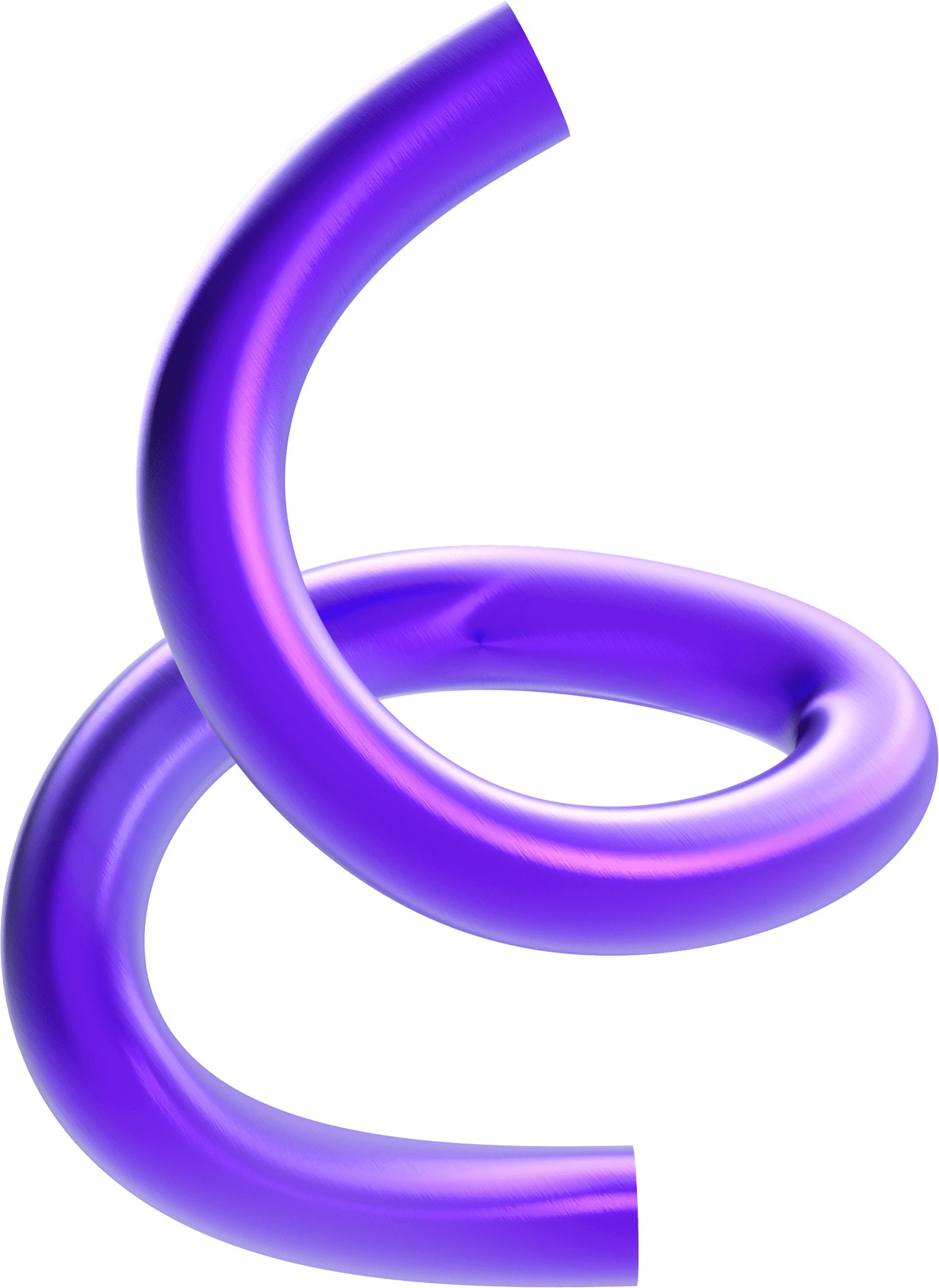

GLOSSARY OF TERMS
BRAND MISSION
The "purpose of life" of the brand expressed in one or two sentences. Explains why the brand was created, what drives it, and how it aims to help the customer.
The "purpose of life" of the brand expressed in one or two sentences. Explains why the brand was created, what drives it, and how it aims to help the customer.
MASCOT
A recognizable character that embodies the brand and highlights its uniqueness. The role of the mascot in a company is defined individually.
A recognizable character that embodies the brand and highlights its uniqueness. The role of the mascot in a company is defined individually.
We want to speak the same language with you. That's why we've created a handy reference guide that explains complex concepts in simple terms.
CONTACT US, AND WE'LL DISCUSS THE DETAILS OF YOUR PROJECT!
So that everything is clear and the cost calculation is accurate, please describe your task in detail in the brief.
GUIDELINES
A practical guide to using corporate identity. It helps company employees and external contractors maintain a consistent brand style across all materials.
A practical guide to using corporate identity. It helps company employees and external contractors maintain a consistent brand style across all materials.
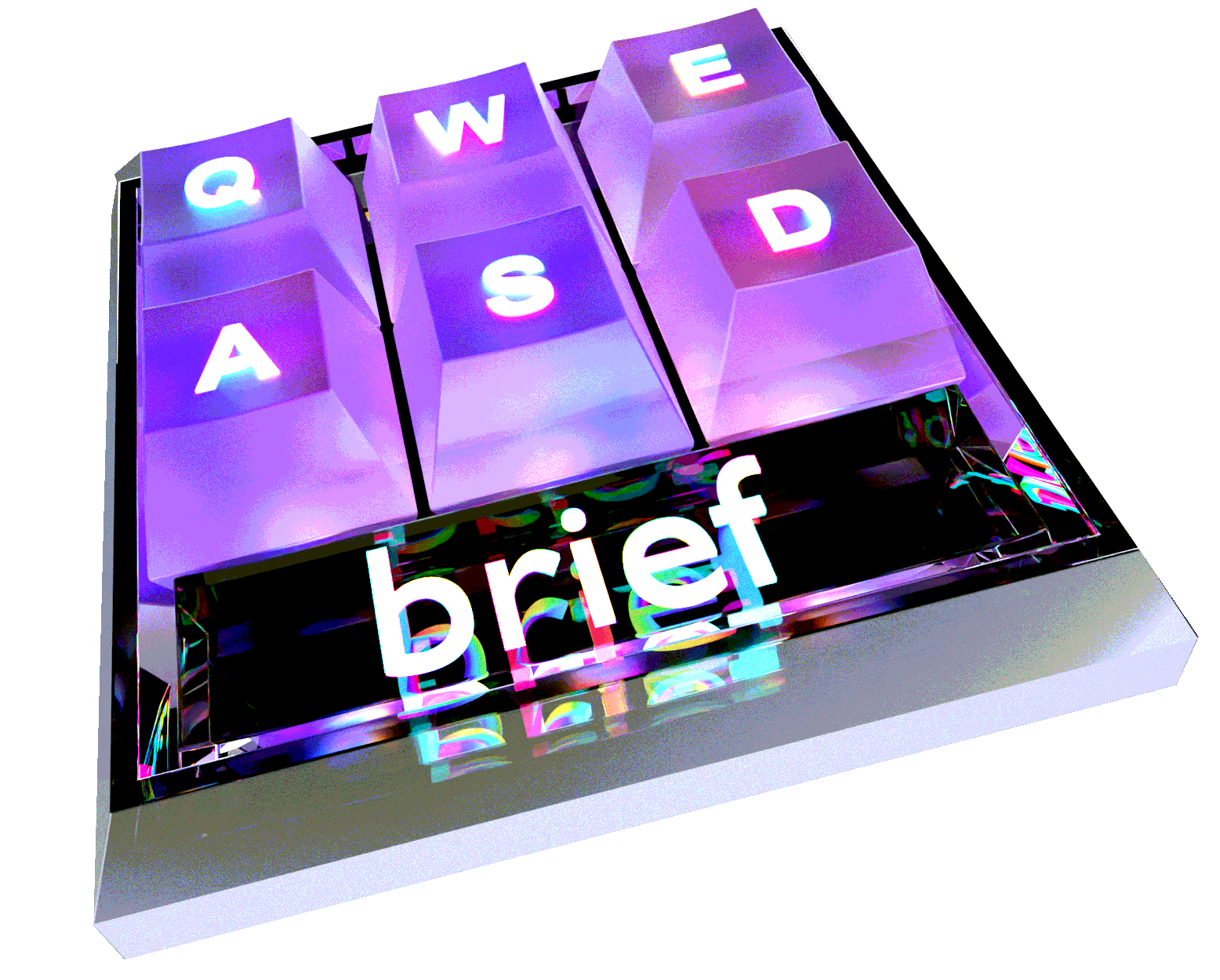
FAQ
FREQUENTLY ASKED QUESTIONS
In our field, no two projects are alike, which is why we determine the cost for each client individually. It depends on a variety of factors, including deadlines, task complexity, scope of work, and types of services.
After holding a briefing and discussing all the details of your project, we'll be able to provide you with an accurate cost and explain what is included.
After holding a briefing and discussing all the details of your project, we'll be able to provide you with an accurate cost and explain what is included.
- A brand book is the broadest concept—it's the primary document for your brand. The brand book contains almost everything you need to know about it: identity, guidelines, brand history, mission, values, positioning strategy, and much more. Essentially, it's a roadmap for everyone working with your brand, from designers to marketers.
- Guidelines are part of the brand book and focus on the visual elements. Guidelines are a guide to using corporate identity: a set of rules for working with the logo, fonts, colors, and other design elements. Guidelines ensure that all materials, from the website to packaging, will be created in a cohesive style.
- The logo book is part of the guidelines and is the smallest element in this "nested doll" structure. It outlines the rules for using the logo in different contexts (online, in print, or on merchandise) and describes the nuances of working with it, such as the spacing from other design elements.
Leaflet, brochure, and catalog are powerful tools for promoting a brand and attracting attention to its products or services. They help present information about the company in a convenient and appealing format, and each has its specific features.
- A leaflet is a printed sheet on both sides that is folded in various ways, such as in half or an accordion style. It most often serves as a sales sheet, making it well-suited for conveying brief information and quickly grabbing attention.
- A brochure consists of several sheets bound together, for example, with staples or glue. Brochures can contain more information than leaflets; for example, they can detail the advantages of your product or provide information about your company. Brochures are often distributed at exhibitions, conferences, presentations, or as an attachment to catalogs.
- A catalog is a large magazine with a complete description of all your products or services, including technical specifications, photos, prices, etc. It's most commonly used to showcase a wide range of products and helps customers make choices and decisions about their purchases.
Raster graphics create images composed of many tiny dots—pixels. Its main advantage is the ability to create detailed and realistic images. Photos exist only in raster format. The most popular formats are JPEG, PNG (for static images), and GIF (for animations).
Vector graphics are used to create images composed of geometric shapes, such as lines, curves, and polygons. Their components are the outline and fill, which are calculated by the computer using special formulas, allowing them to be scaled without losing quality. The most popular formats are EPS (for print) and SVG (for web design).
The choice between raster and vector depends on your needs. Raster graphics are indispensable for creating images with a lot of detail and complex color transitions. One downside is that raster images significantly degrade in quality when enlarged. Vector graphics allow you to scale images without losing quality, making them ideal for logos and illustrations that are used in various sizes. However, vector graphics cannot yet achieve the photographic accuracy and detail that raster images can provide.
The key point is to decide in advance: it's impossible to convert a raster image
to a vector format while preserving all the nuances of the color palette. And vector images don't lose quality when their size is changed.
Vector graphics are used to create images composed of geometric shapes, such as lines, curves, and polygons. Their components are the outline and fill, which are calculated by the computer using special formulas, allowing them to be scaled without losing quality. The most popular formats are EPS (for print) and SVG (for web design).
The choice between raster and vector depends on your needs. Raster graphics are indispensable for creating images with a lot of detail and complex color transitions. One downside is that raster images significantly degrade in quality when enlarged. Vector graphics allow you to scale images without losing quality, making them ideal for logos and illustrations that are used in various sizes. However, vector graphics cannot yet achieve the photographic accuracy and detail that raster images can provide.
The key point is to decide in advance: it's impossible to convert a raster image
to a vector format while preserving all the nuances of the color palette. And vector images don't lose quality when their size is changed.
Color is the basis of any image, whether it's a photo, illustration, or logo. In design, there are different color modes—mathematical models that describe colors and define color space.
CMYK is a color model used for printing. It consists of four colors: Cyan (C), Magenta (M), Yellow (Y), and Key Black (K).
RGB is a color model used for displaying images on monitor screens. It consists of three colors: Red (R), Green (G), and Blue (B).
How to understand what you need?
CMYK is a color model used for printing. It consists of four colors: Cyan (C), Magenta (M), Yellow (Y), and Key Black (K).
RGB is a color model used for displaying images on monitor screens. It consists of three colors: Red (R), Green (G), and Blue (B).
How to understand what you need?
- If you want to print business cards, leaflets, brochures, or promotional materials, you need the CMYK model.
- If you want to create a website, presentation, or upload photos online, use the RGB model.
Creating images is not a simple process. Depending on whether they will be used online or offline, the approach to their development changes significantly.
The differences in design processes for print and web publications primarily lie in the use of different color models. CMYK (Cyan, Magenta, Yellow, Key Black) is used for printing, while RGB (Red, Green, Blue) is used for web design. The issue is that these two models are not interchangeable: the colors you see on the screen when creating a design for web publication won't remain the same when printed.
The next difference is in the layout. The layout for printed materials must consider the physical dimensions of the medium, paper type, and trim margins. On the other hand, layout for web publication needs to be responsive to display correctly on various screens.
The type of graphics also plays an important role. In web design, vector graphics are more commonly used, as they allow for scaling images without losing quality, which is especially important for websites. It's easy to convert a vector image to a raster one, but the reverse process usually gives poor results. Therefore, it's important to decide in advance which type of graphics you need—this is something a designer can assist you with.
Additional differences include the importance of image resolution and paper type for print, while for web design, factors like page load speed and mobile accessibility are crucial.
The most important thing is that creating visuals for print and digital is two completely different processes, and they are paid separately. The designer must understand in advance which format they will be working in. But there's no need to worry—we'll consult with you and help choose a design that fits your goals.
The differences in design processes for print and web publications primarily lie in the use of different color models. CMYK (Cyan, Magenta, Yellow, Key Black) is used for printing, while RGB (Red, Green, Blue) is used for web design. The issue is that these two models are not interchangeable: the colors you see on the screen when creating a design for web publication won't remain the same when printed.
The next difference is in the layout. The layout for printed materials must consider the physical dimensions of the medium, paper type, and trim margins. On the other hand, layout for web publication needs to be responsive to display correctly on various screens.
The type of graphics also plays an important role. In web design, vector graphics are more commonly used, as they allow for scaling images without losing quality, which is especially important for websites. It's easy to convert a vector image to a raster one, but the reverse process usually gives poor results. Therefore, it's important to decide in advance which type of graphics you need—this is something a designer can assist you with.
Additional differences include the importance of image resolution and paper type for print, while for web design, factors like page load speed and mobile accessibility are crucial.
The most important thing is that creating visuals for print and digital is two completely different processes, and they are paid separately. The designer must understand in advance which format they will be working in. But there's no need to worry—we'll consult with you and help choose a design that fits your goals.
In our field, no two projects are alike, which is why we determine the cost for each client individually. It depends on a variety of factors, including deadlines, task complexity, scope of work, and types of services.
After holding a briefing and discussing all the details of your project, we'll be able to provide you with an accurate cost and explain what is included.
After holding a briefing and discussing all the details of your project, we'll be able to provide you with an accurate cost and explain what is included.
- A brand book is the broadest concept—it's the primary document for your brand. The brand book contains almost everything you need to know about it: identity, guidelines, brand history, mission, values, positioning strategy, and much more. Essentially, it's a roadmap for everyone working with your brand, from designers to marketers.
- Guidelines are part of the brand book and focus on the visual elements. Guidelines are a guide to using corporate identity: a set of rules for working with the logo, fonts, colors, and other design elements. Guidelines ensure that all materials, from the website to packaging, will be created in a cohesive style.
- The logo book is part of the guidelines and is the smallest element in this "nested doll" structure. It outlines the rules for using the logo in different contexts (online, in print, or on merchandise) and describes the nuances of working with it, such as the spacing from other design elements.
Leaflet, brochure, and catalog are powerful tools for promoting a brand and attracting attention to its products or services. They help present information about the company in a convenient and appealing format, and each has its specific features.
- A leaflet is a printed sheet on both sides that is folded in various ways, such as in half or an accordion style. It most often serves as a sales sheet, making it well-suited for conveying brief information and quickly grabbing attention.
- A brochure consists of several sheets bound together, for example, with staples or glue. Brochures can contain more information than leaflets; for example, they can detail the advantages of your product or provide information about your company. Brochures are often distributed at exhibitions, conferences, presentations, or as an attachment to catalogs.
- A catalog is a large magazine with a complete description of all your products or services, including technical specifications, photos, prices, etc. It's most commonly used to showcase a wide range of products and helps customers make choices and decisions about their purchases.
Raster graphics create images composed of many tiny dots—pixels. Its main advantage is the ability to create detailed and realistic images. Photos exist only in raster format. The most popular formats are JPEG, PNG (for static images), and GIF (for animations).
Vector graphics are used to create images composed of geometric shapes, such as lines, curves, and polygons. Their components are the outline and fill, which are calculated by the computer using special formulas, allowing them to be scaled without losing quality. The most popular formats are EPS (for print) and SVG (for web design).
The choice between raster and vector depends on your needs. Raster graphics are indispensable for creating images with a lot of detail and complex color transitions. One downside is that raster images significantly degrade in quality when enlarged. Vector graphics allow you to scale images without losing quality, making them ideal for logos and illustrations that are used in various sizes. However, vector graphics cannot yet achieve the photographic accuracy and detail that raster images can provide.
The key point is to decide in advance: it's impossible to convert a raster image to a vector format while preserving all the nuances of the color palette. And vector images don't lose quality when their size is changed.
Vector graphics are used to create images composed of geometric shapes, such as lines, curves, and polygons. Their components are the outline and fill, which are calculated by the computer using special formulas, allowing them to be scaled without losing quality. The most popular formats are EPS (for print) and SVG (for web design).
The choice between raster and vector depends on your needs. Raster graphics are indispensable for creating images with a lot of detail and complex color transitions. One downside is that raster images significantly degrade in quality when enlarged. Vector graphics allow you to scale images without losing quality, making them ideal for logos and illustrations that are used in various sizes. However, vector graphics cannot yet achieve the photographic accuracy and detail that raster images can provide.
The key point is to decide in advance: it's impossible to convert a raster image to a vector format while preserving all the nuances of the color palette. And vector images don't lose quality when their size is changed.
Color is the basis of any image, whether it's a photo, illustration, or logo. In design, there are different color modes—mathematical models that describe colors and define color space.
CMYK is a color model used for printing. It consists of four colors: Cyan (C), Magenta (M), Yellow (Y), and Key Black (K).
RGB is a color model used for displaying images on monitor screens. It consists of three colors: Red (R), Green (G), and Blue (B).
How to understand what you need?
CMYK is a color model used for printing. It consists of four colors: Cyan (C), Magenta (M), Yellow (Y), and Key Black (K).
RGB is a color model used for displaying images on monitor screens. It consists of three colors: Red (R), Green (G), and Blue (B).
How to understand what you need?
- If you want to print business cards, leaflets, brochures, or promotional materials, you need the CMYK model.
- If you want to create a website, presentation, or upload photos online, use the RGB model.
Creating images is not a simple process. Depending on whether they will be used online or offline, the approach to their development changes significantly.
The differences in design processes for print and web publications primarily lie in the use of different color models. CMYK (Cyan, Magenta, Yellow, Key Black) is used for printing, while RGB (Red, Green, Blue) is used for web design. The issue is that these two models are not interchangeable: the colors you see on the screen when creating a design for web publication won't remain the same when printed.
The next difference is in the layout. The layout for printed materials must consider the physical dimensions of the medium, paper type, and trim margins. On the other hand, layout for web publication needs to be responsive to display correctly on various screens.
The type of graphics also plays an important role. In web design, vector graphics are more commonly used, as they allow for scaling images without losing quality, which is especially important for websites. It's easy to convert a vector image to a raster one, but the reverse process usually gives poor results. Therefore, it's important to decide in advance which type of graphics you need—this is something a designer can assist you with.
Additional differences include the importance of image resolution and paper type for print, while for web design, factors like page load speed and mobile accessibility are crucial.
The most important thing is that creating visuals for print and digital is two completely different processes, and they are paid separately. The designer must understand in advance which format they will be working in. But there's no need to worry—we'll consult with you and help choose a design that fits your goals.
The differences in design processes for print and web publications primarily lie in the use of different color models. CMYK (Cyan, Magenta, Yellow, Key Black) is used for printing, while RGB (Red, Green, Blue) is used for web design. The issue is that these two models are not interchangeable: the colors you see on the screen when creating a design for web publication won't remain the same when printed.
The next difference is in the layout. The layout for printed materials must consider the physical dimensions of the medium, paper type, and trim margins. On the other hand, layout for web publication needs to be responsive to display correctly on various screens.
The type of graphics also plays an important role. In web design, vector graphics are more commonly used, as they allow for scaling images without losing quality, which is especially important for websites. It's easy to convert a vector image to a raster one, but the reverse process usually gives poor results. Therefore, it's important to decide in advance which type of graphics you need—this is something a designer can assist you with.
Additional differences include the importance of image resolution and paper type for print, while for web design, factors like page load speed and mobile accessibility are crucial.
The most important thing is that creating visuals for print and digital is two completely different processes, and they are paid separately. The designer must understand in advance which format they will be working in. But there's no need to worry—we'll consult with you and help choose a design that fits your goals.
At TRENDTONIK, we understand that a brand is not just a logo, it's a whole story. It's a story about trust between the agency and the client, between the company and the target audience. And we want to write this story with you.
READY TO START?
To get started, please fill out the brief. If you don't have answers to all your questions yet, that's perfectly fine—we'll find them together.
DO YOU HAVE ANY QUESTIONS?
CONTACT US!
CONTACT US!
Novinsky Boulevard 11a, building 1, office 104
О бренде
info@trendtonik.ru
email
MENU
ADDRESS
+7 (925) 844 6887
COMPANY DETAILS
Full Name
TRENDTONIK, Limited Liability Company
Short Name
TRENDTONIK, LLC
Legal Address
Danilovsky Municipal District, Proyezd Proyektiruyemyy 4062, 6, building 1, room 2B/5
Physical Address
Novinsky Boulevard 11a, building 1, office 104
Correspondence Address
115432, Danilovsky Municipal District, Proyezd Proyektiruyemyy 4062, 6, building 1, room 2B/5
OGRN
1247700309845, State Registration Certificate of Legal Entity dated 10.04.2024
TIN (INN) 9725156555
KPP 772501001
OKVED
74.10 Specialised design activities
OKPO 60540777
General Director
Voronin Anton Alexandrovich
Contact Phone Number
+7 (925) 844 6887
PAYMENT DETAILS
Settlement Account (RUB) 40702810802870016579
Bank Name AO "ALFA-BANK"
Correspondent Account 30101810200000000593
BIC 044525593
TRENDTONIK, Limited Liability Company
Short Name
TRENDTONIK, LLC
Legal Address
Danilovsky Municipal District, Proyezd Proyektiruyemyy 4062, 6, building 1, room 2B/5
Physical Address
Novinsky Boulevard 11a, building 1, office 104
Correspondence Address
115432, Danilovsky Municipal District, Proyezd Proyektiruyemyy 4062, 6, building 1, room 2B/5
OGRN
1247700309845, State Registration Certificate of Legal Entity dated 10.04.2024
TIN (INN) 9725156555
KPP 772501001
OKVED
74.10 Specialised design activities
OKPO 60540777
General Director
Voronin Anton Alexandrovich
Contact Phone Number
+7 (925) 844 6887
PAYMENT DETAILS
Settlement Account (RUB) 40702810802870016579
Bank Name AO "ALFA-BANK"
Correspondent Account 30101810200000000593
BIC 044525593
COPY
COPIED
